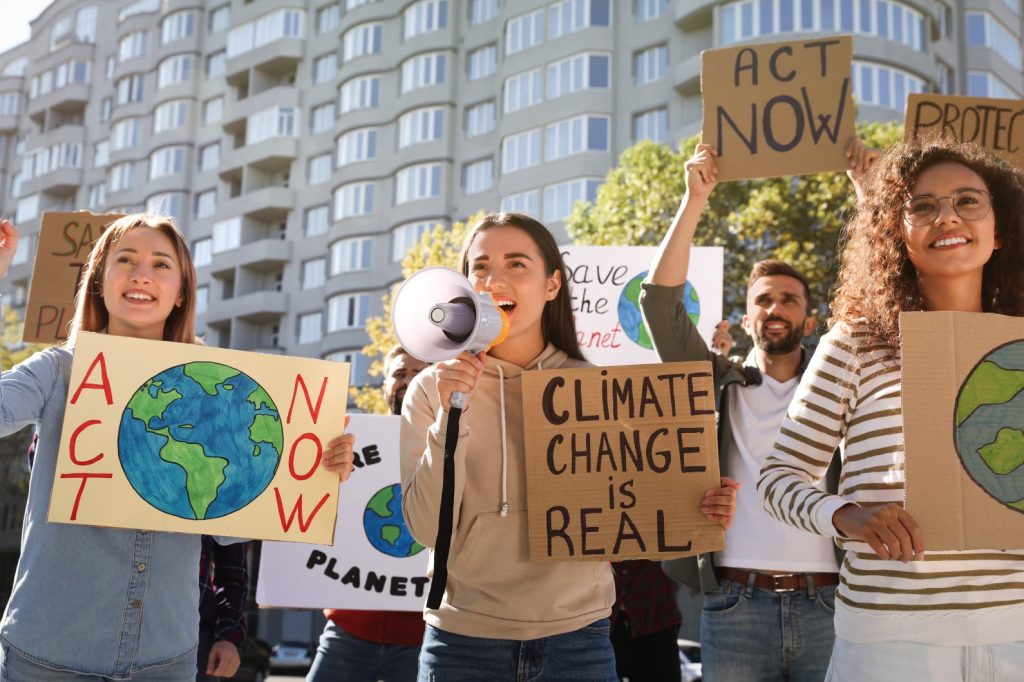

A comprehensive approach to addressing the human security risks posed by climate change, biodiversity loss and pollution is needed – one that supports consideration across the breadth of security dimensions impacted and addresses root causes. Climate change, biodiversity loss and pollution are triple planetary crises of our time. They are widespread, intensifying and unequivocally human-induced.
In September the world’s temperatures were 0.93C warmer than average – and in Australia, we experienced the driest month on record. The Bureau of Meteorology has since declared an El Nino and positive Indian Ocean Dipole are both underway increasing climate and environment risks in our region now. Climate and environment scientists, environment and Indigenous rights groups, women’s rights and youth movements have been asking us to pay attention for a while. Climate change is impacting every system and structure of life on earth, and we are horrifically close to moving beyond 1.5 degrees of warming.
While we slowly boil, we also fight. Conflict the world over is increasing – there are more people experiencing violence now than since World War Two; and global fragility indices point to an increasing threat to our resilience to respond to crises. This escalation of violence demands attention to the sheer scale of suffering we are unleashing.
What we fight over, the resources we use, and what we compete for, are intrinsically linked to climate, biodiversity and natural systems. The effects are far-reaching and have significant implications for peace and security. Climate change, biodiversity loss and pollution each impact insecurity along multiple security dimensions – in the community, our regions, and states.
The United Nations’ Women, Peace and Security agenda recognises the impacts of conflict and crisis on women and girls. The agenda works to support international peace and security, by promoting gender equality and women’s rights in crisis as necessary for building and maintaining peace, responding to, and recovering from conflict and crisis. Through implementation of the Women, Peace and Security agenda there is growing evidence that gender inequalities undermine human security, and that gender equality is part of the solution.
Unabated climate change and environmental damage is a human security issue, the magnitude of its impact on women and girls is expected to be significant. For example, under a ‘Worst-case Climate Path’ scenario, where average temperatures rise by 3-4C by 2100, food insecurity is projected to increase – 240 million more women and girls, and 131 million more men and boys will experience food stress.
It is essential to recognise the local, intersecting and compounding structures of inequality that undermine peace, increase competition and shape the capacity of communities to adapt to human security, climate and environment risks. Recent global carbon budgeting suggests colonial systems continue to have a significant influence on natural resource use and development patterns influencing climate change risks, transformative shifts are needed across our socio-political and economic sectors for coherent climate action.
Australia is well regarded for its implementation of the Women, Peace and Security agenda, and through its commitments to gender equality and climate change could look to expand upon the gender-climate/environment-conflict nexus. This can include looking beyond the inclusion of natural disaster response and recovery in national action plans, to discussing climate change, biodiversity loss and pollution as threats to women’s meaningful participation. It is essential to understand how human security risks are experienced by, and responded to, by women; how climate change and environment issues affect women’s and girls’ human security differently based on gender norms, bias and discrimination.
We are still understanding the ways in which climate change may magnify gender inequalities, or the way in which gender equality can shape positive climate responses. While supporting women’s meaningful participation, investment in closing gender data gaps is critical. Existing climate and environment data could better capture the socio-political factors of climate impacts and response.
We still do not understand the intersections between climate, biodiversity and gender – adding conflict and crisis factors further exposes these data gaps. For instance, we know that conflict contributes to biodiversity risks and habitat destruction. In Ukraine, there are concerns for ecologically important wetlands, migratory bird species and toxic environmental pollutants. We have limited understanding of the ways in which gender inequalities are shaped by climate and environment risks, or the potential solutions available.
Gender inequality shapes and sometimes heightens human security risks. Finding opportunities to support inclusive gender equality and reshaping gender roles to better facilitate equal, meaningful participation can play a vital role in climate change adaptation, mitigation, and resilience-building efforts. Women possess unique knowledge, skills, and perspectives that can contribute to more effective human security solutions that are responsive to their experience of climate and environment risks, as well as crisis and conflict. Their involvement is crucial for developing gender-responsive policies and programs that address the specific needs and challenges faced by women in the face of climate risk.
The Women, Peace and Security agenda’s consideration of climate change and the environment in crisis offers insight into ways that we can approach these challenges. Women have been contributing, leading and shaping peace and security in their communities at the same time as they are looking for solutions to climate risk, and protecting the environment. Supporting diverse women and inclusive gender equality in crisis and conflict, while promoting climate and environment solutions may better enable communities to direct their own pathways to climate justice. Women and girls should be able to define climate security risks and how inequality can undermine human security, as well as respond to these risks as they experience them.
Addressing climate risk through a gender lens is essential for achieving sustainable peace and security. Women’s active participation in climate adaptation and mitigation efforts can contribute to building resilient communities, investing in social cohesion, and reducing the likelihood of conflicts. Moreover, gender-responsive climate policies can help address the specific needs of women and girls, promoting their empowerment and well-being.
The intersection of women, peace, security, and climate risk underscores the need for comprehensive and gender-responsive approaches to tackle these interconnected challenges. Women’s active involvement in decision-making processes at local, regional and international levels, their role as environmental stewards, and the recognition of their unique knowledge and experiences are crucial for effective climate action. By integrating a gender perspective into climate policies and programs, we can promote sustainable peace, security, and resilience.

